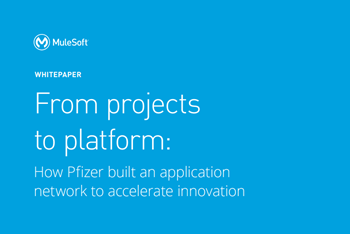Keeping business networks up and running is a crucial role, under the watch of the network administrator and team. As with many critical areas of business, when they’re running fine they go unnoticed. Most leaders and workers are unaware of the carefully orchestrated work in the background that keeps everything ticking over.
It’s only when the network goes down that people become aware. In between these crises, network admins are responsible for avoiding the many other potential points of failure, planning network expansions, and understanding what business users will need from the network next. On top of this they’re configuring hardware, maintaining networks, troubleshooting and planning future upgrades and security across both onsite and cloud networks.
Good admins stay on top of incoming data
As with many areas of technology in business, team engagement requires a degree of crossover and information sharing. IT departments, system admins, service developers, cybersecurity and planning departments are all impacted by the capabilities and features of the network.
Therefore, an admin likely starts their day with the latest news or developments from these departments. To assist in this, the business might have a dedicated Slack, Teams or other request channel for network demands. This allows the admin to respond to them on a priority basis. For example, planning could require an Industrial Internet of Things (IIoT) installation in a new production site, a developer’s new cloud app might demand more bandwidth or a new team of remote workers may need improved VPN access.
With instant messaging tools, absorbing all this information can be done in an hour, enabling our admin to take a well-earned coffee break.
External to the business, the admin will also see regular updates from network hardware/software providers. From new firmware updates, security patches to vulnerability reports, there is much to digest. While most upgrading and installation is automatic, the admin needs to know the impact of any changes from a test environment and see issues arising in real time from other business users of routers, switches, hubs, Wi-Fi hotspots and so on. These can be filtered into an email folder for study, while web FAQ updates can be added to a local wiki for evergreen access.
With visibility into all this activity available on mobile devices, the admin can take lunch downtown, and not worry if something out of the ordinary happens.
Monitoring the dashboards
Networks produce a large amount of data for admins to monitor. As in most areas of digital business, dashboards are available. Modern dashboards are agnostic creations that can accept data from many sources, combining the output from networks, consoles and other reporting tools. This provides a super-view of the networks for efficiency, troubleshooting and predicting problems.
New products use AI analysis to help predict future network needs or identify points of failure and other aspects. These dashboards can provide different types of reports for varying levels of seniority, giving admins, senior managers and network or IT leaders the information they require to support the business or press for budget increases to deliver a more efficient service.
Trouble at the network mill
Despite all the analytics and outage-prevention technology, there will come a time when the network fails or is victim of a wider issue. Now, unlike previous eras where that could spark a mass early exit or a queue of complaints out the IT office door, network failures can be addressed smartly. Even ones that make the press, like Tesla’s recent network outage, are often fixed faster than most customers notice.
Today, technology makes it easier for an admin to identify and isolate the issue. Remote control of devices means reboots, resets or downgrades to a Last Known-Good Configuration can all be done automatically.
Helping to mitigate any problems, off-network technology like an SMS messaging system or cloud chatbot can provide the latest information about the outage to workers and allow them to give feedback. For extended outages, backup networks can come into play, and if there’s a major hardware failure, mobile network providers can bring on-site coverage for customers.
Apart from the really serious cases, this means the network admin will be home in time for dinner. Even if the problem lingers, remote control access and cloud support from vendors can help fix it faster than has been previously possible.
Whatever the size of the business or enterprise, any network administrator will be aware of their reliance on data and connectivity to keep the organization ticking along. They’ll use the best tools available to compress that information, make it available across the team, and use fresh knowledge to help the business make the right decisions.
Of course, this is only until the next generation of physical network upgrade comes crashing down on the wiring runs and server racks. Even then, 5G private business networks might do away with the need for heavy metal solutions altogether.
Access the latest business knowledge in IT
Get Access



Comments
Join the conversation...